Three children look miserable as they stare into the camera with their younger sibling asleep on a chair next to them.
Well, that's what it looks like at first glance. In reality, however, the younger sibling isn't asleep - but dead.
This is just one of a remarkable series of photographs that were taken in Britain and throughout Europe during the Victorian Era of people posing for photographs alongside the corpses of their loved ones.
This macabre style of photography, known as post-mortem photography, became very popular in Victorian Europe, much more so than in North America.
It was an age of high infant mortality rates - and children were often shown in repose on a couch or in a crib, while adults were more commonly posed in chairs.
Sometimes the subject's eyes were propped open or the pupils were painted onto the print to give the effect they were alive.
It was far cheaper and quicker than commissioning a painted portrait and it enabled the middle classes to have an affordable, cherished keepsake of their dead family members.
Haunting photographs of the dead taken in Victorian age shows fad for relatives posing alongside bodies of their dearly departed
The invention of the daguerreotype - the earliest photographic process - in 1839 brought portraiture to the masses
Enabled the middle classes to have affordable keepsake of their dead family members
Known as post-mortem photography, some of the dearly departed were photographed in their coffin
This particular style, often accompanied by funeral attendees, was common in Europe, but less so in the United States
By Jill Reilly
9 October 2013
Daily Mail
Lined up for a family photo these Victorian children look miserable as they stare sternly at the camera.
But their grim expressions may be understandable after it becomes clear they are posing for a macabre photo with their dead younger sibling who is laid out on a chair.
These remarkable pictures show the morbid way that the deceased were remembered in the late 19th century
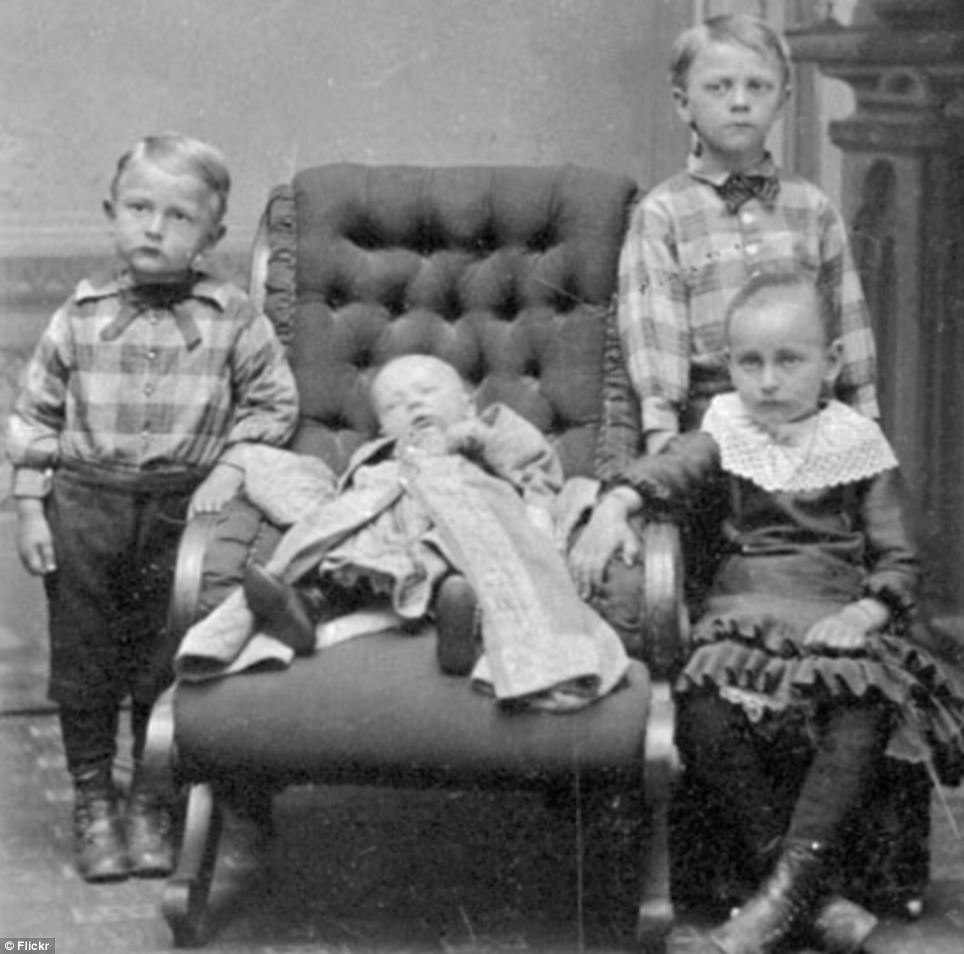
Macabre: Lined up for a family photo these Victorian children look miserable as they look sternly at the camera. But their grim expressions may be understandable after it becomes clear they are posing for a macabre photo with their dead sibling who is laid out on a chair
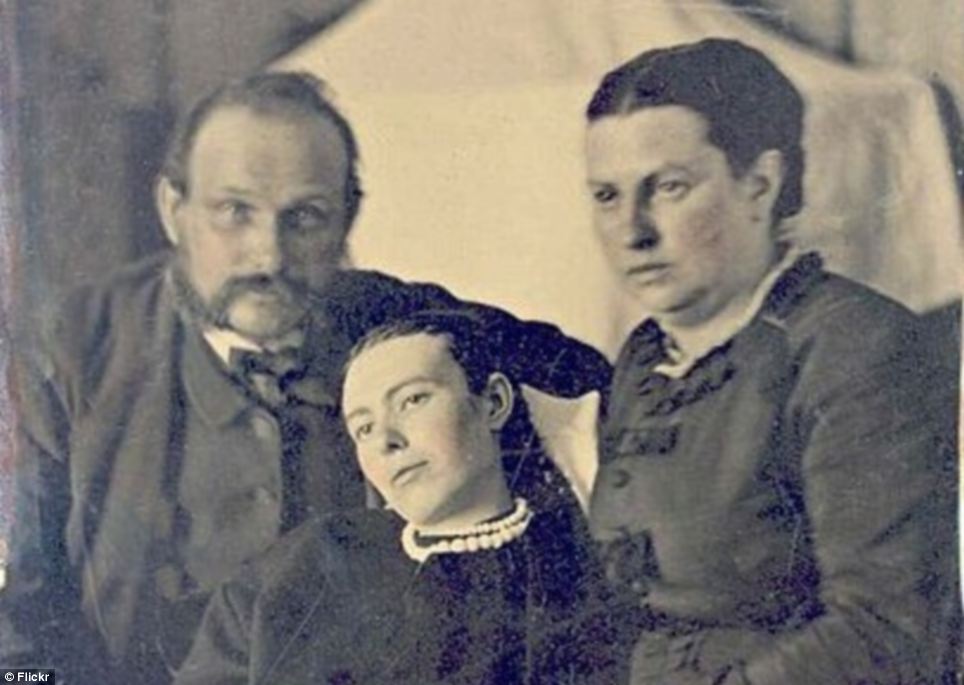
Macabre: These remarkable pictures show the morbid way that the deceased were remembered in the late 19th century
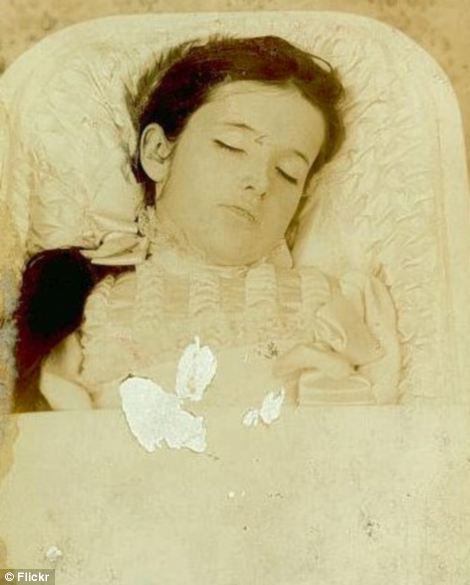
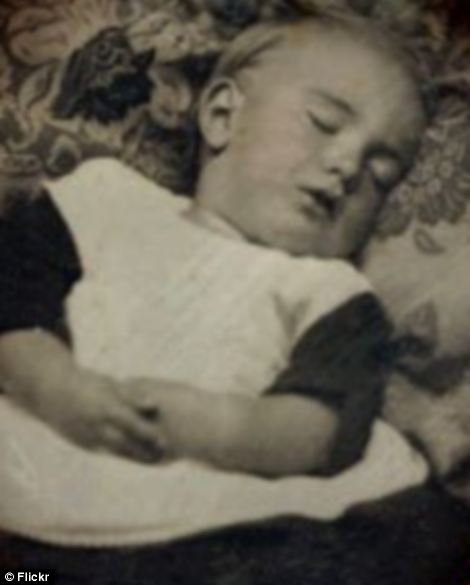
Keepsake: The invention of the daguerreotype - the earliest photographic process - in 1839 brought portraiture to the masses. It was far cheaper and quicker than commissioning a painted portrait and it enabled the middle classes to have an affordable, cherished keepsake of their dead family members
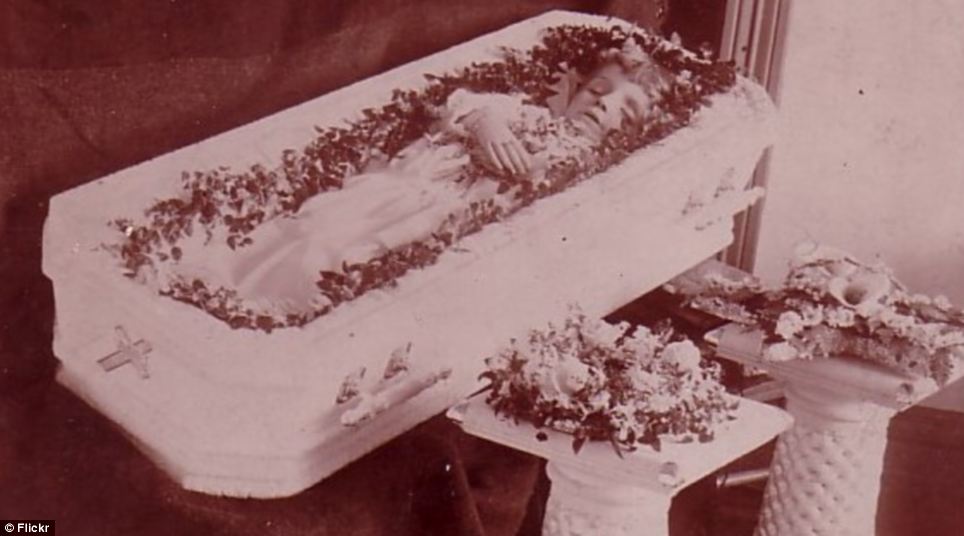
Memory: A young girl is displayed in a tiny coffin before her funeral in this grim photo
The invention of the daguerreotype - the earliest photographic process - in 1839 brought portraiture to the masses.
It was far cheaper and quicker than commissioning a painted portrait and it enabled the middle classes to have an affordable, cherished keepsake of their dead family members.
Known as post-mortem photography, some of the dearly departed were photographed in their coffin.
This particular style, often accompanied by funeral attendees, was common in Europe but less so in the United States.
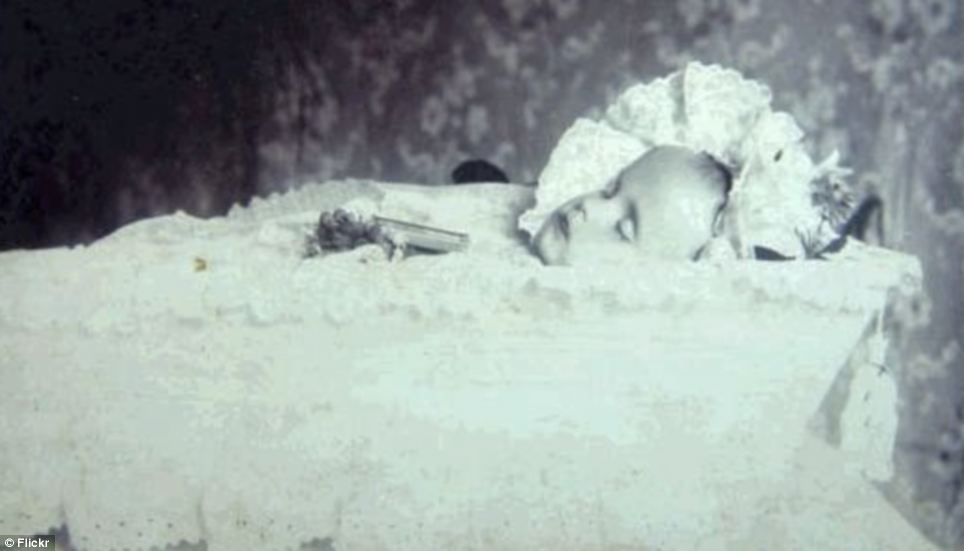
Laid out: Known as post-mortem photography, some of the dearly departed were photographed in their coffins, while others were laid out in funeral dressage
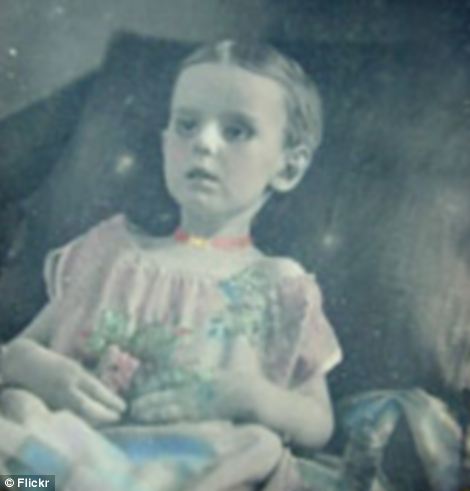
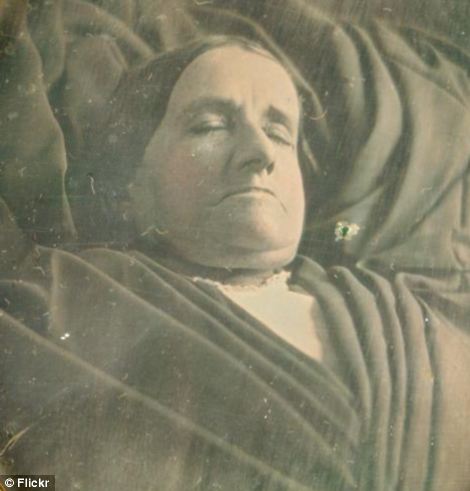
Trend: Post-mortem photography, often accompanied by funeral attendees, was common in Europe but less so in the United States
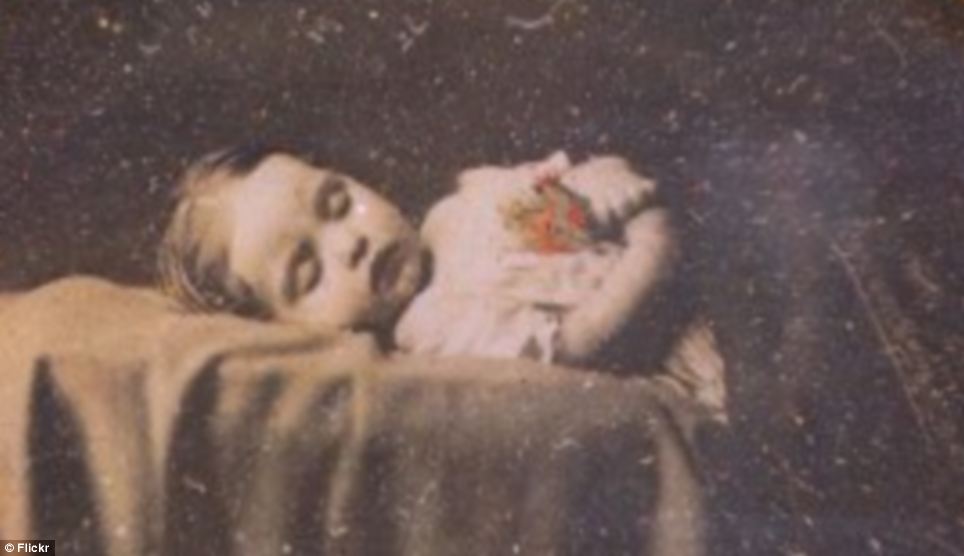
Victorian Post Mortem Tintypes: The deceased were immortalized in photographs during the Victorian era. The Victorian after-death photos continue to haunt
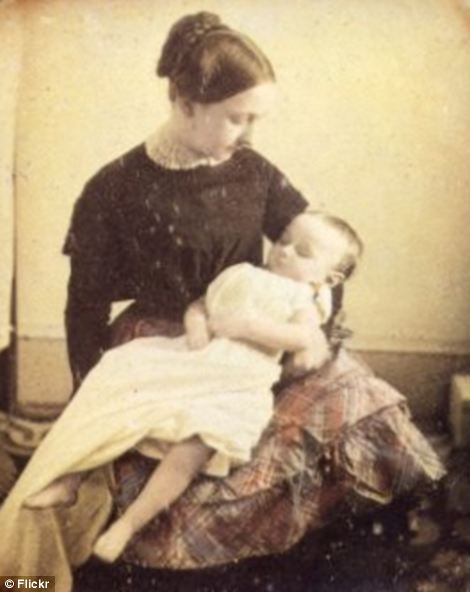
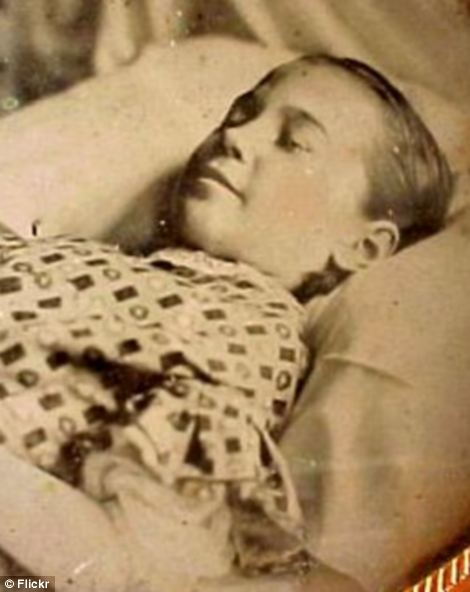 In some photos the subjects were made to look like they were in a deep sleep or even life-like as they were positioned next to family members
In some photos the subjects were made to look like they were in a deep sleep or even life-like as they were positioned next to family members
However, in others, they were made to look like they were in a deep sleep or even life-like as they were positioned next to family members.
It was an age of high infant mortality rates - and children were often shown in repose on a couch or in a crib, while adults were more commonly posed in chairs.
Sometimes the subject's eyes were propped open or the pupils were painted onto the print to give the effect they were alive.
In early images, a rosy tint was added to the cheeks of corpses.
By the early 20th century, the practice fell out of fashion as photos became more commonplace with the arrival of the snapshot.
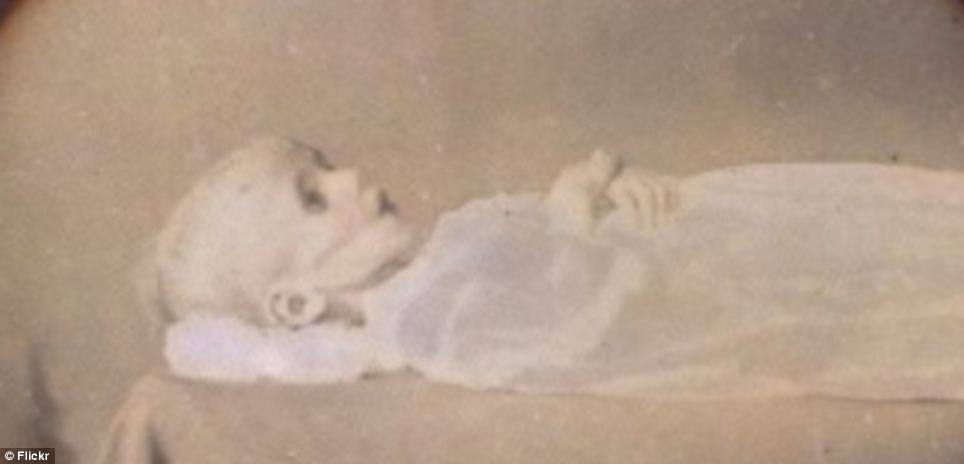
Tragic: It was an age of high infant mortality rates - and children were often shown in repose on a couch or in a crib, while adults were more commonly posed in chairs
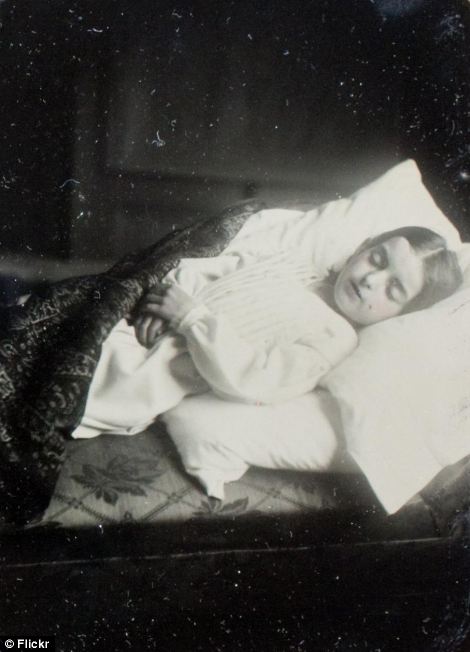
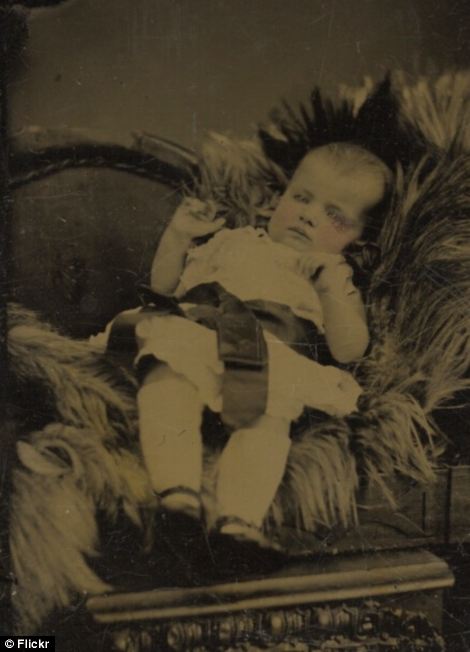
Eerie: Sometimes the subject's eyes were propped open or the pupils were painted onto the print to give the effect they were alive

Remembrance: A young child surrounded by flowers is photographed in an open coffin as a keepsake for its family
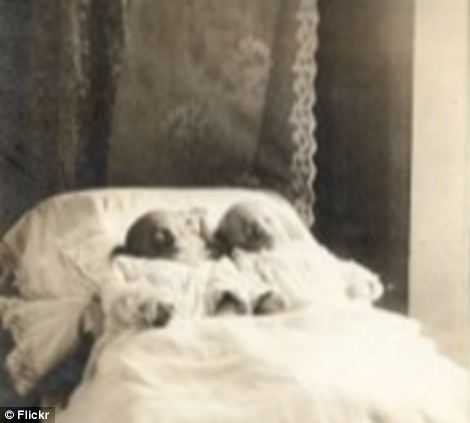
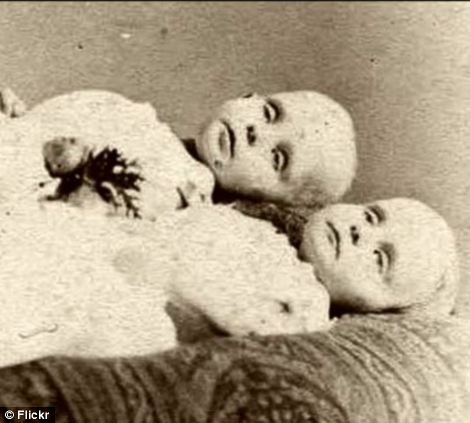
Effects: In early images, a rosy tint was added to the cheeks of corpses
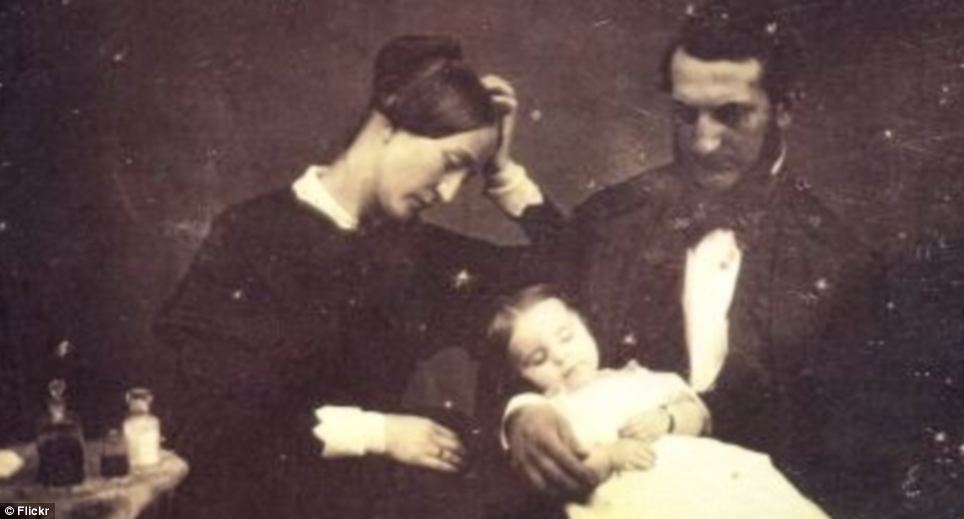
Portrait: Parents pose for a photo holding the body of their little girl clothed in a white dress
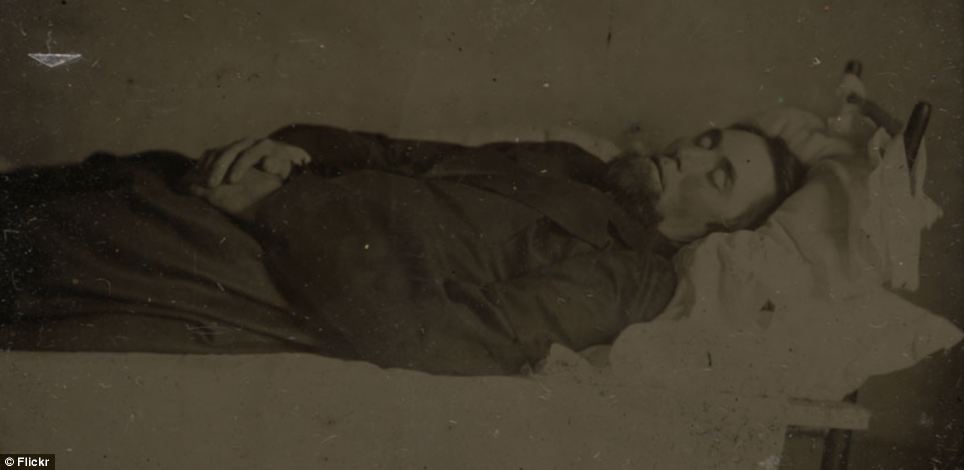
Disturbing: An adult male is photographed as if he is asleep on a bed
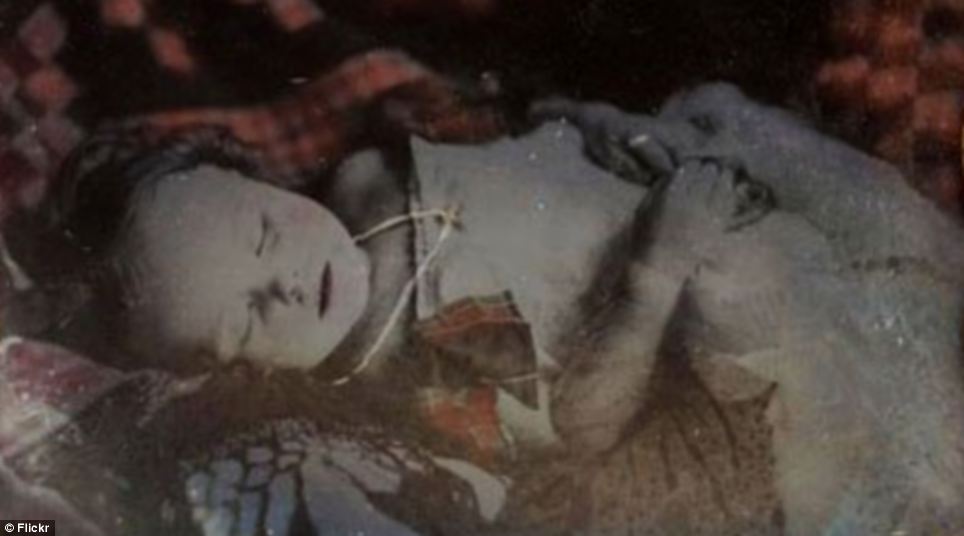
Sign of the times: By the early 20th century, the practice fell out of fashion as photos became more commonplace with the arrival of the snapshot
Read more: Victorian photographs show relatives posing alongside dead bodies | Mail Online
Follow us: @MailOnline on Twitter | DailyMail on Facebook
Well, that's what it looks like at first glance. In reality, however, the younger sibling isn't asleep - but dead.
This is just one of a remarkable series of photographs that were taken in Britain and throughout Europe during the Victorian Era of people posing for photographs alongside the corpses of their loved ones.
This macabre style of photography, known as post-mortem photography, became very popular in Victorian Europe, much more so than in North America.
It was an age of high infant mortality rates - and children were often shown in repose on a couch or in a crib, while adults were more commonly posed in chairs.
Sometimes the subject's eyes were propped open or the pupils were painted onto the print to give the effect they were alive.
It was far cheaper and quicker than commissioning a painted portrait and it enabled the middle classes to have an affordable, cherished keepsake of their dead family members.
Haunting photographs of the dead taken in Victorian age shows fad for relatives posing alongside bodies of their dearly departed
The invention of the daguerreotype - the earliest photographic process - in 1839 brought portraiture to the masses
Enabled the middle classes to have affordable keepsake of their dead family members
Known as post-mortem photography, some of the dearly departed were photographed in their coffin
This particular style, often accompanied by funeral attendees, was common in Europe, but less so in the United States
By Jill Reilly
9 October 2013
Daily Mail
Lined up for a family photo these Victorian children look miserable as they stare sternly at the camera.
But their grim expressions may be understandable after it becomes clear they are posing for a macabre photo with their dead younger sibling who is laid out on a chair.
These remarkable pictures show the morbid way that the deceased were remembered in the late 19th century

Macabre: Lined up for a family photo these Victorian children look miserable as they look sternly at the camera. But their grim expressions may be understandable after it becomes clear they are posing for a macabre photo with their dead sibling who is laid out on a chair

Macabre: These remarkable pictures show the morbid way that the deceased were remembered in the late 19th century


Keepsake: The invention of the daguerreotype - the earliest photographic process - in 1839 brought portraiture to the masses. It was far cheaper and quicker than commissioning a painted portrait and it enabled the middle classes to have an affordable, cherished keepsake of their dead family members

Memory: A young girl is displayed in a tiny coffin before her funeral in this grim photo
The invention of the daguerreotype - the earliest photographic process - in 1839 brought portraiture to the masses.
It was far cheaper and quicker than commissioning a painted portrait and it enabled the middle classes to have an affordable, cherished keepsake of their dead family members.
Known as post-mortem photography, some of the dearly departed were photographed in their coffin.
This particular style, often accompanied by funeral attendees, was common in Europe but less so in the United States.

Laid out: Known as post-mortem photography, some of the dearly departed were photographed in their coffins, while others were laid out in funeral dressage


Trend: Post-mortem photography, often accompanied by funeral attendees, was common in Europe but less so in the United States

Victorian Post Mortem Tintypes: The deceased were immortalized in photographs during the Victorian era. The Victorian after-death photos continue to haunt


However, in others, they were made to look like they were in a deep sleep or even life-like as they were positioned next to family members.
It was an age of high infant mortality rates - and children were often shown in repose on a couch or in a crib, while adults were more commonly posed in chairs.
Sometimes the subject's eyes were propped open or the pupils were painted onto the print to give the effect they were alive.
In early images, a rosy tint was added to the cheeks of corpses.
By the early 20th century, the practice fell out of fashion as photos became more commonplace with the arrival of the snapshot.

Tragic: It was an age of high infant mortality rates - and children were often shown in repose on a couch or in a crib, while adults were more commonly posed in chairs


Eerie: Sometimes the subject's eyes were propped open or the pupils were painted onto the print to give the effect they were alive

Remembrance: A young child surrounded by flowers is photographed in an open coffin as a keepsake for its family


Effects: In early images, a rosy tint was added to the cheeks of corpses

Portrait: Parents pose for a photo holding the body of their little girl clothed in a white dress

Disturbing: An adult male is photographed as if he is asleep on a bed

Sign of the times: By the early 20th century, the practice fell out of fashion as photos became more commonplace with the arrival of the snapshot
Read more: Victorian photographs show relatives posing alongside dead bodies | Mail Online
Follow us: @MailOnline on Twitter | DailyMail on Facebook